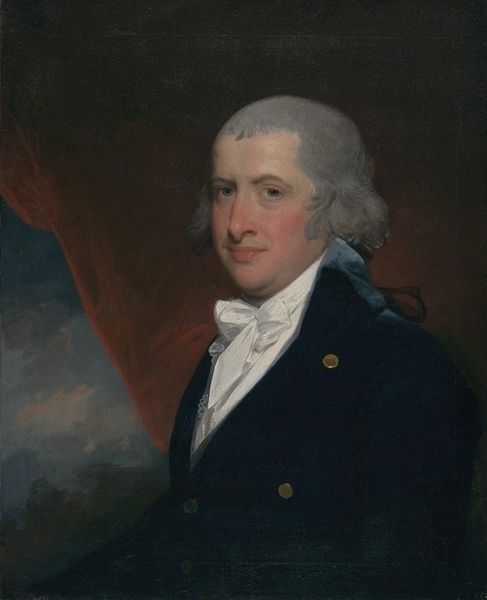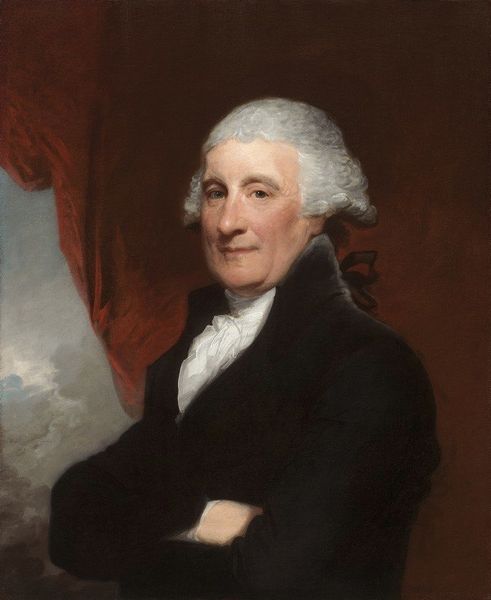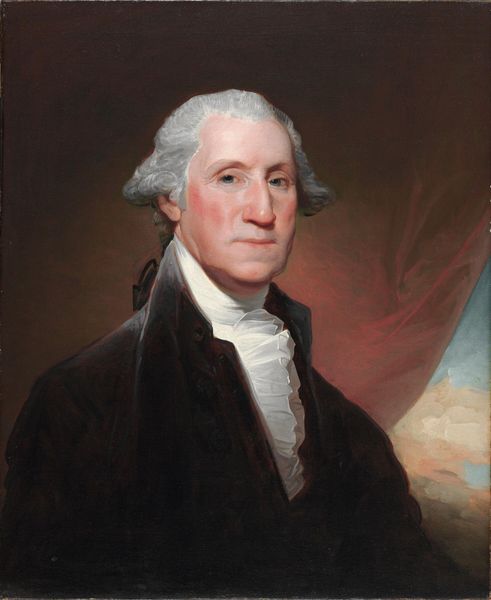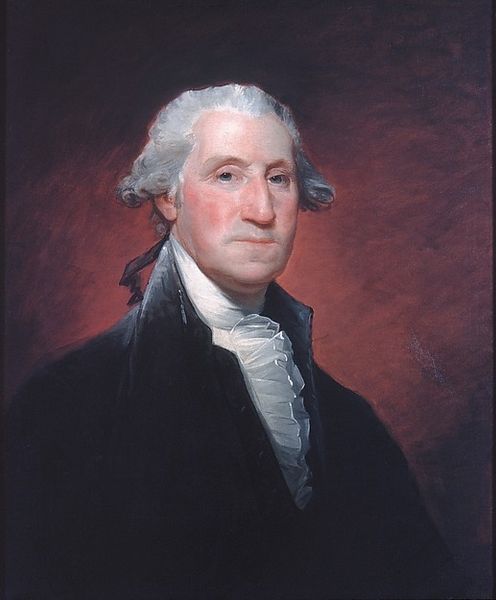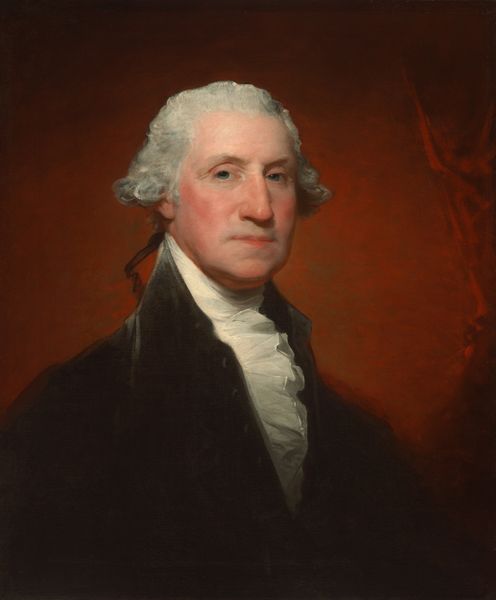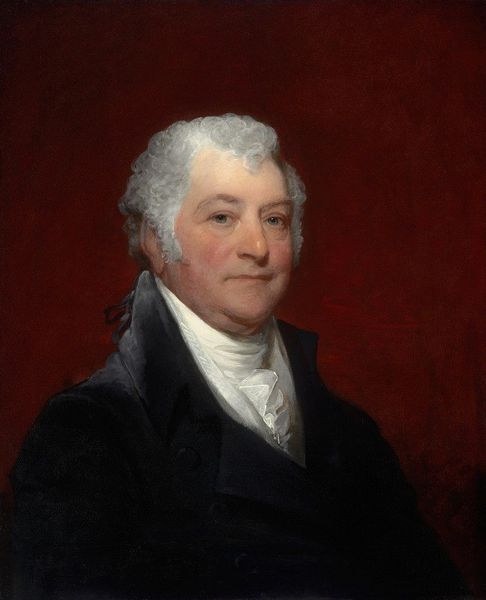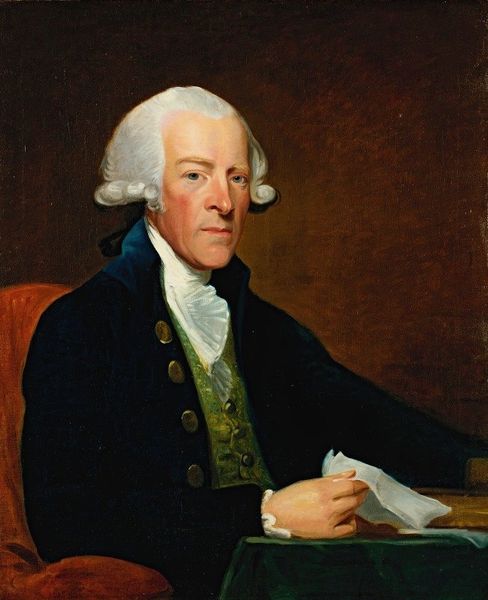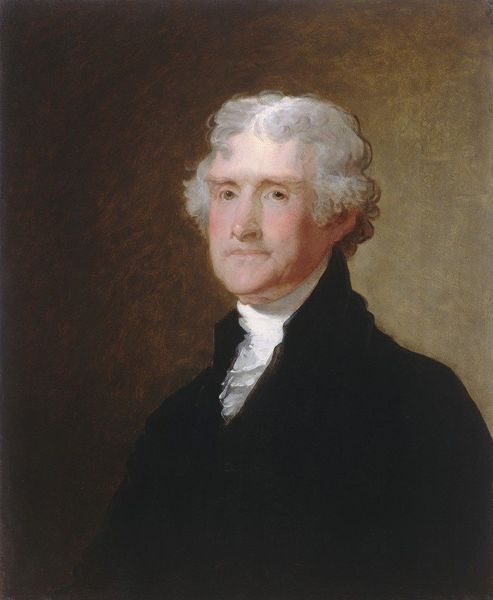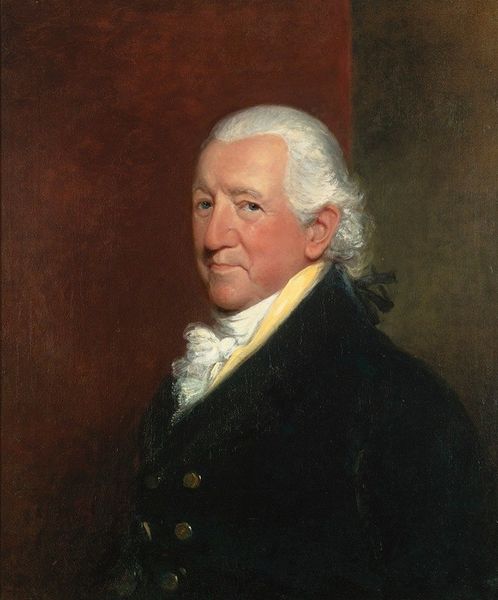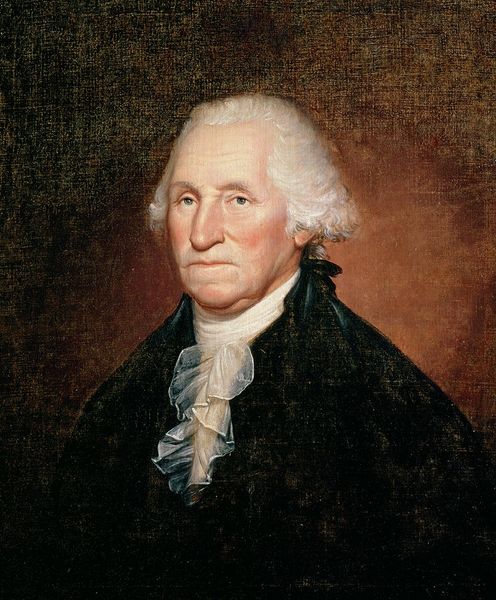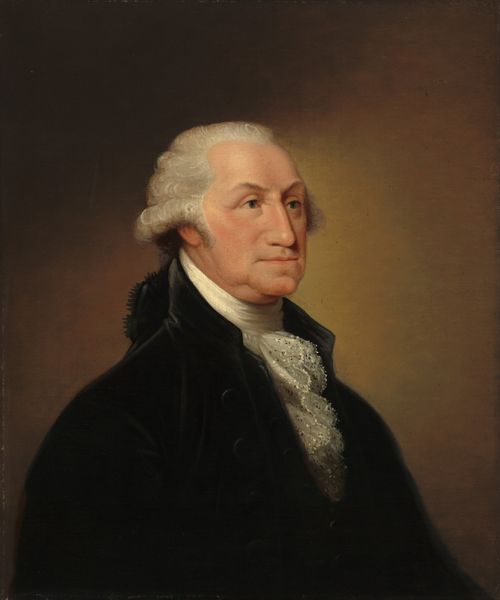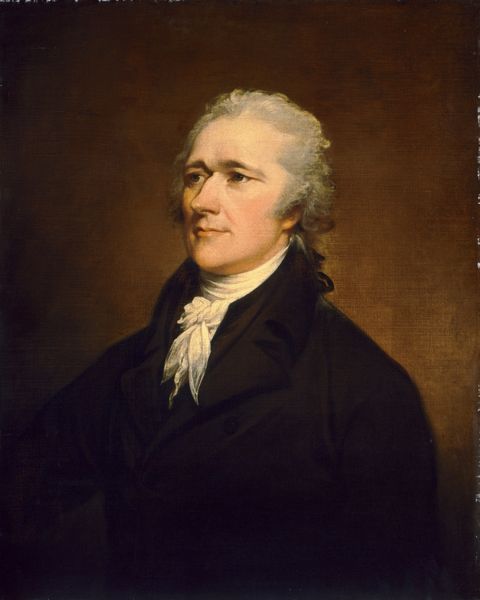
painting, oil-paint
#
portrait
#
figurative
#
neoclacissism
#
painting
#
oil-paint
#
figuration
#
history-painting
#
academic-art
Copyright: Public Domain: Artvee
Curator: Ah, this is Gilbert Stuart's "Edward Shippen," completed in 1796. A rather stately portrait, don't you think? Editor: Stately indeed. There’s a kind of subdued opulence to it. The darkness of his coat against that almost violently red backdrop makes him seem to float forward. I find the materiality captivating—the evidence of paint. Curator: Absolutely. Note how Stuart masterfully balances the formality of the neoclassical style with a raw, almost urgent application of pigment, visible especially around the contours of Shippen's face and wig. The subtle asymmetry creates an authentic sensibility, contrary to other neoclassical-era portraits. Editor: The weight and texture of that velvet coat—the dye must have been exorbitant, consider the historical context in which cloth was not as easily mass produced as today, yet it also seems understated, even practical in a way. The labor to achieve those elegant textures… who was involved? And that lace cravat, delicate and ephemeral! I can imagine the women dedicated to textile creations to adorn those wealthy patrons. Curator: It speaks volumes, doesn't it? And the light! Notice how the highlights on Shippen's face draw your eye to his expression, a subtle, almost quizzical gaze. The contrast in tones gives him an immediacy beyond just capturing a likeness. Observe how it almost dissects the pictorial space. Editor: Dissect might be the perfect word. You start to wonder about the sourcing of those pigments, too—the trade routes, the social dynamics. And there's such control shown in the facture; it seems like Stuart, as an artist, has total authority. I appreciate a master of painting, who uses material intelligence, the knowing of medium. Curator: Indeed. He orchestrates a fascinating dance between surface and depth, form and emotion, technique and concept. Editor: Exactly, making us question our relationship with representation and materiality. It's both document and…a performance. It is a fascinating window into the relationship between materiality and society back then. Curator: Agreed. A magnificent glimpse into history viewed through the lens of materiality and formal prowess.
Comments
No comments
Be the first to comment and join the conversation on the ultimate creative platform.

